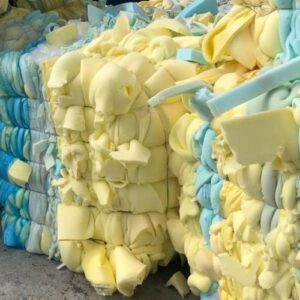Recycled PU Foam
The Transformative Power of Recycled PU Foam
Introduction:
In an era where environmental consciousness takes center stage, recycled materials pave the way for a sustainable future. One such eco-friendly champion is Recycled PU Foam, a versatile and innovative solution that breathes new life into discarded polyurethane foam. This article explores the significance, benefits, and applications of Recycled PU Foam, shedding light on its journey from waste to resource.

The Rise of Rebound PU Foam Scrap:
Polyurethane (PU) foam, widely used in furniture, mattresses, and packaging, often faces disposal challenges. However, the advent of PU Foam scrap has revolutionized the narrative, turning what was once considered waste into a valuable and sustainable resource.
- Environmental Impact:
- Recycled PU Foam significantly reduces the environmental footprint associated with traditional disposal methods. By diverting foam from landfills, this recycling process minimizes pollution, conserves energy, and contributes to a circular economy.
- Resource Conservation:
- The production of virgin PU foam requires the extraction of raw materials and energy-intensive processes. Rebound Foam scrap minimizes the demand for these resources, promoting efficient use and conservation of natural elements.
Benefits of Recycled PU Foam:
- Eco-Friendly Manufacturing:
- The production of Recycled rebound Foam consumes fewer resources compared to manufacturing new foam. This eco-friendly approach aligns with global efforts to reduce carbon emissions and combat climate change.
- Waste Reduction:
- By repurposing PU foam, Recycled Foam scrap plays a crucial role in waste reduction. It addresses the challenge of foam disposal and contributes to a more sustainable waste management system.
- Cost-Effective Solutions:
- Rebound PU Foam offers cost-effective alternatives for industries seeking high-quality materials. Manufacturers can incorporate recycled foam into their processes, reducing production costs without compromising on performance.
Applications of Recycled PU Foam:
- Furniture and Bedding:
- Rebound PU Foam serves as an excellent filling material for furniture cushions and mattresses. Its versatility and durability make it a preferred choice for manufacturers committed to sustainable practices.
- Insulation Materials:
- The thermal insulation properties of PU Foam scrap make it suitable for applications in construction and insulation materials. By utilizing recycled foam, builders contribute to both energy efficiency and waste reduction.
- Automotive Industry:
- Recycled PU Foam finds applications in the automotive sector, particularly for seat cushions and interior components. Its comfort, resilience, and eco-friendly attributes align with the industry’s pursuit of sustainable alternatives.
- Creative Arts and Crafts:
- Artists and crafters embrace PU Foam Scrap for various projects, from sculptures to DIY home decorations . Its malleability and ease of manipulation open doors to creative expressions while promoting sustainability.
- Soundproofing Solutions:
- The acoustic properties of PU Foam scrap make it a valuable material for soundproofing solutions. Whether used in studios, theaters, or residential spaces, recycled foam contributes to enhanced acoustics.
Conclusion:
Recycled PU Foam emerges as a beacon of sustainability, transforming waste into a resource with diverse applications. This eco-friendly alternative not only addresses environmental concerns but also offers practical and cost-effective solutions across industries. As awareness grows and industries seek greener practices, the journey of PU Foam Scrap from waste to valuable material exemplifies the power of innovation in shaping a more sustainable future. Embracing recycled materials like PU foam not only benefits businesses but also contributes to the collective responsibility of safeguarding the planet for generations to come.
